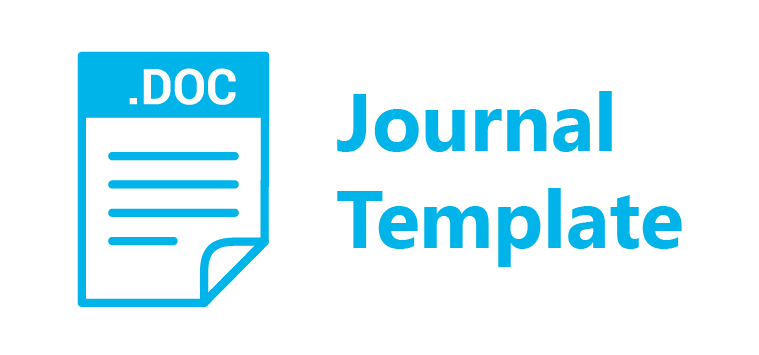Multi-Period Evacuation Shelter Selection considering Dynamic Hazards Assessment
DOI:
https://doi.org/10.35806/ijoced.v1i2.60Keywords:
Evacuation, Shelter selection,, Dynamic selection,, Relocation, Hazard mapAbstract
Natural phenomena may lead to a huge disaster that is affected by triggering phenomenon and the following phenomena that occured afterward. Nevertheless, following single scenario of disaster to create a disaster emergency plan might lead to an incomparable estimation of risk. The decision maker could reduce the risk and perform an efficient evacuation, By understanding disaster prone area based on hazard assessment. This study proposed a multi-period shelter selection and relocation by considering possible impact due to cascading effect and secondary disaster. The objective was to minimize the cost associated with transport and relocation shelter during the evacuation process. A simple yet powerful Simulated Annealing was proposed to solve the model. This study compared the cost that occurred based on two approaches, hazard assessment map, and radius based map. The result showed that model with hazard map generated a better result in comparison with radius based map. Hazard map could offer different subsets of the shelters identified in the first stage to be selected, thereby producing a minimum number of evacuees.
References
Beasley, J. E. (1993). Lagrangean heuristics for location problems. European Journal of Operational Research, 65(3), 383–399. https://doi.org/https://doi.org/10.1016/0377-2217(93)90118-7
Biro Pusat Statistik. (2010). BPS: Kabupaten Dalam Angka, Biro Pusat Statistik. Yogyakarta Special District, Indonesia. Yogyakarta.
Blong, R. J. (1984). Volcanic Hazards: A Sourcebook on the Effects of Eruptions (R. J. B. T.-V. H. BLONG, ed.). https://doi.org/https://doi.org/10.1016/B978-0-12-107180-6.50014-7
Boyd, E., Wolshon, B., & Van Heerden, I. (2009). Risk Communication and Public Response during Evacuations: The New Orleans Experience of Hurricane Katrina. Public Performance & Management Review, 32(3), 437–462. Retrieved from http://www.jstor.org/stable/40586766
Gai, W., Deng, Y., Jiang, Z., & Li, J. (2016). Multi-objective evacuation routing optimization for toxic cloud releases. Reliability Engineering & System Safety, 159. https://doi.org/10.1016/j.ress.2016.10.021
Institute of Medicine (US). (2007). Roundtable on Environmental Health Sciences, Research, and Medicine. Environmental Public Health Impacts of Disasters: Hurricane Katrina. In National Academies Press (US). Retrieved from https://www.ncbi.nlm.nih.gov/books/NBK54237/
Kongsomsaksakul, S., Yang, C., & Chen, A. (2005). Shelter location-allocation model for flood evacuation planning. Journal of the Eastern Asia Society for Transportation Studies, 6. https://doi.org/10.11175/easts.6.4237
Li, A. C. Y., Nozick, L., Xu, N., & Davidson, R. (2012). Shelter location and transportation planning under hurricane conditions. Transportation Research Part E: Logistics and Transportation Review, 48(4), 715–729. https://doi.org/https://doi.org/10.1016/j.tre.2011.12.004
Liu, B., Siu, Y. L., & Mitchell, G. (2015). Hazard interaction analysis for multi-hazard risk assessment: a systematic classification based on hazard-forming environment. Natural Hazards and Earth System Sciences Discussions, 3, 7203–7229. https://doi.org/10.5194/nhessd-3-7203-2015
Maarif Syamsul. (2010). Merapi menyapa kehidupan (I. B. N. P. Bencana, ed.). Jakarta: Badan Nasional Penanggulangan Bencana.
Mei, E. T. W., Lavigne, F., Picquout, A., de Bélizal, E., Brunstein, D., Grancher, D., … Vidal, C. (2013). Lessons learned from the 2010 evacuations at Merapi volcano. Journal of Volcanology and Geothermal Research, 261, 348–365. https://doi.org/https://doi.org/10.1016/j.jvolgeores.2013.03.010
Mimura, N., Yasuhara, K., Kawagoe, S., Yokoki, H., & Kazama, S. (2011). Damage from the Great East Japan Earthquake and Tsunami - A quick report. Mitigation and Adaptation Strategies for Global Change, 16(7), 803–818. https://doi.org/10.1007/s11027-011-9297-7
Ophiyandri, T., Amaratunga, R., & Pathirage, C. (2010). Community based post disaster housing reconstruction: Indonesian perspective.
Schooler, T. Y. (2001). Disasters, Coping with. In International Encyclopedia of the Social & Behavioral Sciences (pp. 3713–3718). https://doi.org/10.1016/B0-08-043076-7/03812-2
Stein, S., Geller, R. J., & Liu, M. (2012). Why earthquake hazard maps often fail and what to do about it. Tectonophysics, 562–563, 1–25. https://doi.org/https://doi.org/10.1016/j.tecto.2012.06.047
Tomsen, E., Lindsay, J. M., Gahegan, M., Wilson, T. M., & Blake, D. M. (2014). Evacuation planning in the Auckland Volcanic Field, New Zealand: a spatio-temporal approach for emergency management and transportation network decisions. Journal of Applied Volcanology, 3(1), 6. https://doi.org/10.1186/2191-5040-3-6
Xu, J., Yin, X., Chen, D., An, J., & Nie, G. (2016). Multi-criteria location model of earthquake evacuation shelters to aid in urban planning. International Journal of Disaster Risk Reduction, 20, 51–62. https://doi.org/https://doi.org/10.1016/j.ijdrr.2016.10.009
Yan, X., Liu, X., & Song, Y. (2018). Optimizing evacuation efficiency under emergency with consideration of social fairness based on a cell transmission model. PLOS ONE, 13(11), e0207916. Retrieved from https://doi.org/10.1371/journal.pone.0207916


















